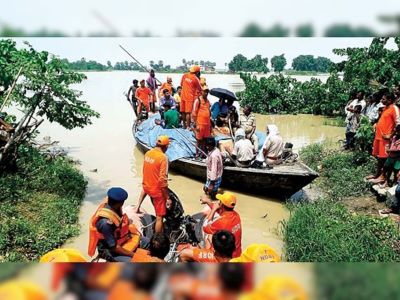Context
On August 1, 2024, the central government introduced the Disaster Management (Amendment) Bill in the Lok Sabha, further centralizing the already centralized Disaster Management Act, 2005. This amendment would grant statutory status to organizations like the National Crisis Management Committee, complicating disaster response and leading to delays. Although the Bill aims to strengthen the National and State Disaster Management Authorities and establish an ‘Urban Disaster Management Authority’ for major cities, it risks worsening problems due to insufficient financial devolution.
Overview
The National Disaster Management Act, 2005, establishes a robust framework for managing disasters in India. It sets up:
- National Disaster Management Authority (NDMA): Led by the Prime Minister, this body formulates policies and guidelines for disaster management.
- State Disaster Management Authorities (SDMAs): Responsible for overseeing disaster management at the state level.
- District Disaster Management Authorities (DDMAs): Handle disaster response and preparedness at the district level.
|
Definition: A prolonged period of excessively hot weather, which may be accompanied by high humidity.
|
Centralization Concerns
- The amendment Bill weakens the
National Disaster Response Fund(ndrf)
by removing specific purposes for its use.
- A key issue with the Disaster Management
Act is the excessive centralization of decision-
making regarding fund allocation, especially during severe disasters.
- The Act currently lacks provisions for a prompt central government response in severe disaster situations.
- An example of this issue is the delayed disbursement of disaster relief funds, with Tamil Nadu being initially denied funds and Karnataka receiving them much later.
- Given the escalating climate crisis, there is a need to reconsider and potentially revise the concept of disasters under the Disaster Management Act, 2005.
Restricted Definition of ‘Disaster’
- On July 25, 2024, the Minister of State for Science, Technology, and Earth Sciences stated that heatwaves will not be classified as a notified disaster under the Disaster Management Act, 2005. This aligns with the 15th Finance Commission's view, which saw no merit in expanding the scope of notified disasters.
- The current list of notified disasters eligible for assistance under the National and State Disaster Response Funds includes cyclones, droughts, earthquakes, fires, floods, tsunamis, hailstorms, landslides, avalanches, cloudbursts, pest attacks, frost, and cold waves. This narrow definition contrasts with the global perspective, where heatwaves are widely recognized as climate-related disasters due to their severe impacts on ecosystems and human health.
- India recorded 536 heat wave days, the highest in nearly 14 years, with 10,635 heat wave-related deaths from 2013 to 2022, indicating a growing crisis. The Disaster Management Act, 2005, and the proposed amendment Bill fail to adapt to climate-induced disasters, as their definition of "disaster" is restrictive and outdated.
- The Act’s list does not include climate-induced events like heatwaves, which can vary regionally and have significant impacts similar to traditional disasters. For instance, a normal summer temperature of 40°C in northern states might be a heat wave in the Himalayas, yet the current definition doesn’t accommodate such regional variations.
- The restrictive definition fails to recognize prolonged heatwaves as natural disasters despite their substantial human impact, revealing a disconnect between traditional disaster frameworks and the realities of climate change.
- Assessment of Effectiveness: Evaluate if the Bill effectively addresses contemporary challenges arising from the power imbalance between the central and State governments.
- Financial Dependence: Consider whether States remain heavily reliant on the central government for funds.
- Comparison with the Disaster Management Act, 2005: Analyze if the Bill adequately improves upon the 2005 Act, given past failures in disaster management.
- Financial Preparedness: Revisit and enhance efforts for financial preparedness in disaster management and response.
- Focus on Disaster Management: Shift the discussion from assigning blame for past disasters (e.g., Wayanad, Kerala) to improving disaster management strategies and predicting future occurrences.
- Emphasis on Cooperative Federalism: in management of disaster
- Moving Beyond Blame: Avoid blame games and focus on the true spirit of cooperative federalism to enhance disaster management and response.
While the Disaster Management Amendment Act, 2024, holds promise for improving disaster management in India, its success will largely depend on addressing power dynamics, ensuring financial autonomy, and learning from past experiences to build a resilient and responsive disaster management system.
|
1. Evaluate the impact of climate change on disaster management in India. How should disaster management strategies be adapted to address the increasing frequency and intensity of climate-related disasters? 250 words 2. Analyze the role of technology in disaster management. What are the current technological tools and methods used in disaster prediction, response, and recovery in India? 150 words |
Source : the Hindu







